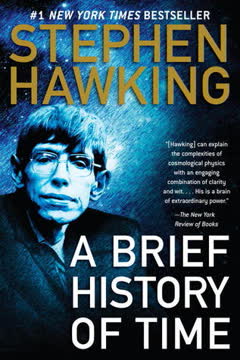Key Takeaways
1. Our perception and knowledge are shaped by evolutionary adaptation to reality.
War' nicht das Auge sonnenhaft, Die Sonne konnt' es nie erblicken. ('If the eye were not sunlike, it could never see the sun'.) — Goethe
Knowledge is interaction. Human knowledge arises from the interaction between us, as physical perceiving subjects, and the equally physical external world, the object of our perception. Our cognitive apparatus, including senses and nervous system, is itself an objective reality shaped by evolution through contact with this external world.
Adapted tools. Our modes of thought and perception—like causality, substance, time, and space—are functions of a neurosensory organization evolved for survival. These "spectacles" don't distort reality unpredictably but provide a real, albeit simplified, image of the world, adapted to aspects vital for our species.
Hypothetical realism. This view, termed "hypothetical realism," posits that our cognitive tools correspond to actual realities because they evolved in response to them. Understanding our cognitive mechanisms, like understanding a microscope's optics, is crucial for objective investigation, allowing us to distinguish properties of the object from limitations of our instrument.
2. Life is a self-reinforcing cycle of energy and information acquisition.
'Life feeds on negative entropy.'
Dual feedback. Living systems are characterized by a dual positive feedback cycle: they acquire and store energy, and they acquire and store information. The more energy absorbed, the more the system can grow and absorb more; the more information acquired (adaptation), the better the system is at acquiring energy, which in turn increases the probability of acquiring further knowledge.
Active enterprise. This coupled interaction of energy and information gain makes life an active enterprise, not merely a passive process of random change and elimination of the unfit. Organisms actively seize favorable circumstances, increasing the incidence of further such circumstances, explaining the speed and directionality of evolution towards higher complexity.
Knowledge as wealth. The accumulated wealth of knowledge, whether in the genome, individual memory, or cultural tradition, is a primary driver of this process. The selection pressure towards increasing survival-relevant information can explain the general direction of evolution from "lower" to "higher" states, viewed as increments in stored knowledge.
3. Evolution creates fundamentally new systems by integrating simpler parts.
'Crier, c'est unir' (To create is to unify').
Creative flashes. Organic development involves "creative flashes" (fulguratio) where independent systems integrate to form a new unit of a higher order with entirely new, unpredictable characteristics. This explains phenomena like the Gestalt principle that the whole is more than the sum of its parts.
Integration and subordination. Development proceeds through differentiation and subordination of parts, as described by Goethe. While the new system gains complexity, the integrated subsystems often simplify, specializing in particular functions within the higher entity, becoming dependent on it.
Unilateral dependence. Higher systems depend on the laws and characteristics of the lower strata from which they emerged, but the lower strata do not possess the characteristics specific to the higher. This unilateral relationship means higher systems cannot be simply "reduced" to their lower components, leaving an "irrational residue" in historical explanation.
4. Cognitive functions exist in layered levels, from innate reflexes to complex thought.
B is never non-A but always A + B; C is A + B + C, etc.
Strata of existence. The world is built in strata (Inorganic, Organic, Conscious, Spiritual), each with unique existential categories and laws. Higher strata depend on lower ones but possess autonomous structures and laws, creating a unilateral dependence analogous to integrated systems.
Avoiding fallacies. Understanding these strata prevents fallacies like explaining higher-level phenomena (e.g., consciousness) solely by lower-level categories (e.g., mechanics) or vice versa (e.g., pan-psychism). Each level adds new properties without violating the laws of the levels below.
Beyond opposites. The relationship between levels is not one of contradictory opposites (A vs. non-A) but of addition and integration (A, A+B, A+B+C). This applies to concepts like "man and animal"; man is not non-animal but animal + unique human characteristics, differing in essence, not just degree.
5. Learning modifies innate programs, adapting behavior through individual experience.
All learning ability is based on open programmes which presuppose the presence, not of less, but of more information in the genome than do so-called innate behaviour patterns.
Adaptive modification. Beyond fixed, instantaneous responses, organisms exhibit adaptive modifications of behavior during their lifetime, which improve survival. These changes are not random but guided by genetically specified "open programs."
Open programs. An open program contains genetic information for multiple potential mechanisms, with environmental input determining which is realized. This requires more genetic information than a closed program, illustrating that "innate" and "learned" are not mutually exclusive but interdependent concepts.
Storing information. Unlike instantaneous information mechanisms, adaptive modification stores information by changing the structure of the behavioral machinery (likely in the nervous system). This allows organisms to cope with short-term environmental changes, bridging the gap between slow genomic adaptation and non-storing responses.
6. Conceptual thought emerges from integrating multiple animal cognitive abilities.
Language translates all non-visual relationships into spatial relationships.
Integration of functions. Human conceptual thought arises from the integration of multiple cognitive functions found in animals, including:
- Abstraction/Perception (Gestalt, constancy)
- Insight/Spatial Representation (visual depth, focusing, mental models)
- Voluntary Movement (precise motor control, reafference)
- Curiosity/Self-exploration (objective investigation, play)
- Imitation (copying actions/sounds)
- Tradition (transmission of acquired knowledge)
Spatial foundation. The central representation of space, developed through orientation and voluntary movement, appears fundamental to abstract thought, as evidenced by how language uses spatial metaphors for non-spatial concepts (e.g., "before" Christmas, "deep" thought). This suggests thinking involves tentative actions within a neural model of reality.
Self-discovery. Self-exploration, particularly the discovery of one's own body (like the hand) as an objective entity, is a crucial step. This insight, combined with other cognitive functions, elevates grasping to conceiving and awareness of object characteristics to concepts.
7. The human mind is a collective, cultural system inheriting acquired knowledge.
The human mind is a supra-individual phenomenon.
New level of life. The integration of cognitive functions in humans, particularly conceptual thought, language, and cumulative tradition, creates a new level of life: the human mind and culture. This system operates on the same basic principles as lower life forms (energy/information feedback) but with new mechanisms.
Inheritance of acquired traits. Unlike biological evolution where acquired traits are not typically inherited genetically, human culture allows for the inheritance of acquired knowledge and techniques through tradition. This dramatically accelerates development and knowledge accumulation.
Cultural structure. Cultural tradition shapes individual cognitive functions, providing a "world-view apparatus" and working hypotheses that influence perception and learning. This cultural knowledge, stored in material forms (writings, recordings) and brains, forms a structure that guides behavior, analogous to the genome but more adaptable and less tested.
8. Cultures evolve like species, diverging through variation and isolation.
Cultures do not emerge in linear succession or follow a uniform pattern of laws... but develop independently of each other, just as do the different species of animal and plant — a polyphyletic development, as a phylogeneticist would call it.
Polyphyletic development. Like biological species, human cultures develop independently from common roots, diverging over time. Comparative methods used in phylogeny (comparing similarities/dissimilarities) are applicable to studying cultural history, revealing distinct lineages rather than a single, unified human history.
Pseudo-speciation. Cultural groups, even subcultures, develop distinct traditions and norms, leading to a form of "pseudo-speciation." This divergence is driven by:
- Chance variations in tradition
- Isolation (geographical or social)
- Competition between groups
Intercultural rivalry. Competition between different cultures, using varied means (foods, tools, weapons), has been a crucial driver of human intellectual development and inventiveness. This contrasts with harmful intraspecific rivalry within a single group.
9. Ritualization structures social behavior and preserves cultural invariance.
The triumph ceremony not only symbolizes the union of individuals: it actually brings it about.
Ritual's functions. Ritualization, both phylogenetic (innate signals) and cultural (learned symbols/actions), plays a vital role in social cohesion and behavior. Key functions include:
- Communication: Actions become signals understood by others.
- Channeling: Directing behavior (especially aggression) into specific, often less destructive, forms.
- Motivation: Creating new, autonomous drives (e.g., urge to perform a ritual).
- Group Cohesion/Isolation: Strengthening bonds within a group and distinguishing it from others.
Cultural invariance. While phylogenetic ritualization doesn't change the genome, cultural rituals are crucial for preserving the invariance of traditional characteristics. They instill emotional values (respect, fear, pleasure) associated with established norms, making deviation unpleasant and adherence rewarding.
Dogma and identity. This process leads to the consolidation of cultural knowledge into dogma, providing a necessary stable foundation for further development, even in science. Adherence to cultural rituals and norms is essential for developing a sense of identity and belonging.
10. Human curiosity and youth rebellion are innate forces driving cultural change.
'Novarum rerum cupidus', was how the Romans defined the political revolutionary: 'A man eager for new things'.
Balance of forces. Cultural survival depends on a balance between forces preserving tradition (invariance) and those driving change (adaptability). Excessive dominance of either can lead to stagnation or disintegration.
Innate drive for novelty. Humans retain a lifelong urge to explore and seek novelty, unlike most animals whose exploratory behavior diminishes after maturity. This innate curiosity, combined with a rebellious spirit, particularly strong in youth, creates tension with traditional values.
Youth's role. Adolescence involves a phylogenetically programmed phase where young people challenge parental traditions and seek new ideals, often identifying with different social groups. This process, analogous to biological dispersal and object fixation (imprinting), facilitates the adoption of new cultural norms, ensuring adaptation to changing environments.
11. Language and symbols consolidate abstract thought and tradition.
'The word dies in the pen', wrote Goethe.
Symbolic meaning. While many rituals involve quasi-symbolic actions, linguistic symbols are unique in their ability to represent abstract concepts governed by innate laws of thought. They provide a fixed, shared meaning distinct from the emotional complexes of other rituals.
Object independence. Language allows tradition to become independent of the concrete presence of objects. Facts and relationships can be discussed and transmitted using symbols alone, enabling the accumulation of supra-individual knowledge over long periods, a key human achievement.
Structure and change. Language and symbols provide the necessary structure to consolidate abstract thought and tradition, but this structure also creates rigidity. Like lava solidifying, ideas captured in language and laws gain permanence but lose fluidity, creating a tension between the need for stable knowledge and the need for continuous adaptation and discovery.
Last updated:
Review Summary
Behind the Mirror explores the evolution of human intelligence and cognition from a zoologist's perspective. Readers found it insightful, offering a unique view on intelligence as a product of evolution rather than a computational model. The book's philosophy of "hypothetical realism" reconciles internal and external realities. While some praised its compelling arguments and valuable insights, others found it overly technical and difficult to read. Overall, readers appreciated Lorenz's approach to studying culture and society as living organisms, despite its challenging content.
Download PDF
Download EPUB
.epub digital book format is ideal for reading ebooks on phones, tablets, and e-readers.








